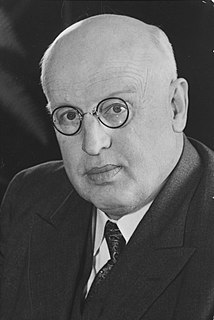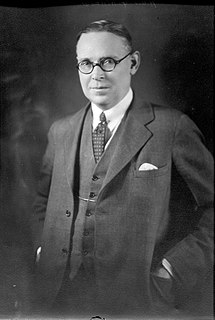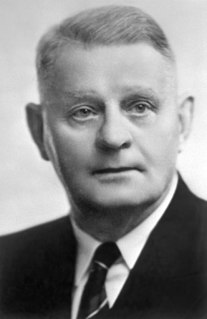
Arthur Lewis Watkins Sifton was a Canadian lawyer, judge and politician who served as the second premier of Alberta from 1910 until 1917. He became a minister in the federal cabinet of Canada thereafter. Born in Canada West, he grew up there and in Winnipeg, where he became a lawyer. He subsequently practised law with his brother Clifford Sifton in Brandon, where he was also active in municipal politics. He moved west to Prince Albert in 1885 and to Calgary in 1889. There, he was elected to the 4th and 5th North-West Legislative Assemblies; he served as a minister in the government of premier Frederick Haultain. In 1903, the federal government, at the instigation of his brother, made Sifton the Chief Justice of the Northwest Territories. After Alberta was created out of a portion of the Northwest Territories in 1905, Sifton became the first Chief Justice of Alberta in 1907 and served until 1910.

Alexander Cameron Rutherford was a Canadian lawyer and politician who served as the first premier of Alberta from 1905 to 1910. Born in Ormond, Canada West, he studied and practiced law in Ottawa before he moved with his family to the North-West Territories in 1895. There, he began his political career, winning in his third attempt a seat in the North-West Legislative Assembly. In keeping with the territorial custom, Rutherford ran as an independent but generally supported the territorial administration of Premier Frederick W. A. G. Haultain. At the federal level, however, Rutherford was a Liberal.

The Executive Council of Alberta, or more commonly the Cabinet of Alberta, is the Province of Alberta's equivalent to the Cabinet of Canada. The government of the province of Alberta is a constitutional monarchy and parliamentary democracy with a unicameral legislature—the Legislative Assembly, which consists of 87 members elected first past the post (FPTP) from single-member constituencies. The premier is normally a member of the Legislative Assembly, and usually draws the members of Cabinet from among the members of the Legislative Assembly. The legislative powers in the province however, lie with the Legislative Assembly of Alberta. Its government resembles that of the other Canadian provinces. The capital of the province is Edmonton, where the Alberta Legislative Building is located. Government is conducted after the Westminster model.

The 1905 Alberta general election was the first general election held in the Province of Alberta, Canada on November 9, 1905, to elect twenty five members of the Alberta legislature to the 1st Alberta Legislative Assembly, shortly after the province was created out of the Northwest Territories on September 1, 1905.

The 1909 Alberta general election was the second general election held in the Province of Alberta, Canada on March 22, 1909, to elect 41 members of the Alberta legislature to the 2nd Alberta Legislature.

The 2nd Alberta Legislative Assembly was in session from March 23, 1909, to April 17, 1913, with the membership of the assembly determined by the results of the 1909 Alberta general election which was held on March 22, 1909. The Legislature officially resumed on March 23, 1909, and continued until the fourth session was prorogued and dissolved on March 25, 1913, prior to the 1913 Alberta general election.

The Government of Alberta refers to the provincial government of the province of Alberta. Its powers and structure are set out in the Constitution Act, 1867.
The North-West Territories Liberal-Conservative Party also known formally as the Liberal-Conservative Association prior to 1903 and the Territorial Conservative Association after 1903, was a short lived political party in the Northwest Territories, Canada. from 1897 to 1905. It was a branch of the federal Conservative Party of Canada.

Charles Wilson Cross was a Canadian politician who served in the Legislative Assembly of Alberta and the House of Commons of Canada. He was also the first Attorney-General of Alberta. Born in Ontario, he studied law at Osgoode Hall Law School before coming west to practise in Edmonton. He became active with the Liberal Party of Canada, and when Alberta was created in 1905 he was chosen by Premier Alexander Cameron Rutherford to be its first Attorney-General. Implicated in the Alberta and Great Waterways Railway scandal, he resigned in 1910 along with the rest of Rutherford's government.
The Getty Ministry was the combined Cabinet, chaired by Premier Don Getty, and Ministers that governed Alberta from the mid-point of the 20th Alberta Legislature from November 1, 1985, to nearly the end of the 22nd Alberta Legislature until December 14, 1992.
The Lougheed Ministry was the combined Cabinet, chaired by Premier Peter Lougheed, and Ministers that governed Alberta from the 17th Alberta Legislature from September 10, 1971, to mid-point of the 20th Alberta Legislature until November 1, 1985.
The Strom Ministry was the combined Cabinet, chaired by Premier Harry Strom, and Ministers that governed Alberta from the party way through the 16th Alberta Legislature from December 12, 1968, to end of the end of the 16th Legislature and the swearing in of Premier Peter Lougheed on September 10, 1971.

The Manning Ministry was the combined Cabinet, chaired by Premier Ernest Manning, and Ministers that governed Alberta from the part way through the 9th Alberta Legislature from May 31, 1943, to mid-point of the 16th Alberta Legislature on December 12, 1968.

The Aberhart Ministry was the combined Cabinet, chaired by Premier William Aberhart, and Ministers that governed Alberta from the 8th Alberta Legislature from September 3, 1935, to mid-point of the 9th Alberta Legislature on May 23, 1943.

The Reid Ministry was the combined Cabinet, chaired by Premier Richard Gavin Reid, and Ministers that governed Alberta from part way through the 7th Alberta Legislature from July 10, 1934, to September 3, 1935.

The Brownlee Ministry was the combined Cabinet, chaired by Premier John Edward Brownlee, and Ministers that governed Alberta from part way through the 5th Alberta Legislature from November 23, 1925, to part way through the 7th Alberta Legislature on July 10, 1934.

The Greenfield Ministry was the combined Cabinet, chaired by Premier Herbert Greenfield, and Ministers that governed Alberta during the 5th Alberta Legislature from August 13, 1921 to November 23, 1925.

The Stewart Ministry was the combined Cabinet, chaired by Premier Charles Stewart, and Ministers that governed Alberta during the 4th Alberta Legislature from October 30, 1917, to August 13, 1921.

The Sifton Ministry was the combined Cabinet, chaired by Premier Arthur Sifton, and Ministers that governed Alberta party way through the 2nd Alberta Legislature beginning on May 26, 1910, through the 3rd Alberta Legislature to October 30, 1917.











